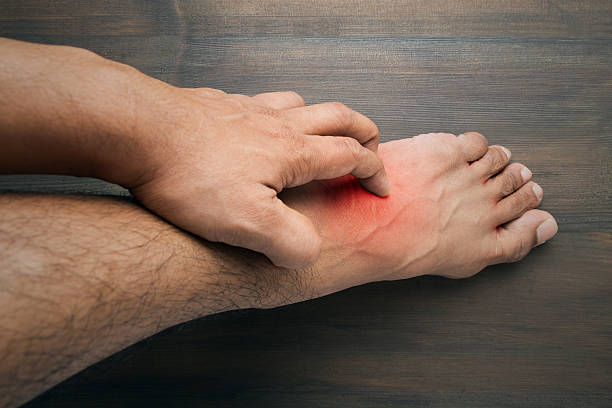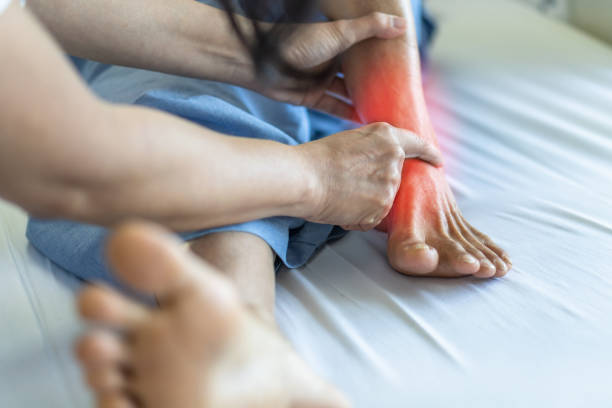Burning Feet Syndrome, also known as Grierson-Gopalan syndrome, is a condition characterized by a burning, tingling, or numb sensation in the feet. This can cause discomfort and even interfere with daily activities, such as walking or sleeping.
There are several causes of Burning Feet Syndrome, including nerve damage, diabetes, peripheral neuropathy, and certain medications. In some cases, the cause may be unknown.
Symptoms of Burning Feet Syndrome include:
Burning sensation: The primary symptom of Burning Feet Syndrome is a burning or tingling sensation in the feet, which can be intense and uncomfortable.
Numbness: Some individuals with Burning Feet Syndrome may experience numbness in the feet, which can impair sensation and cause difficulty with movements such as walking.
Pain: Many people with Burning Feet Syndrome experience pain in the feet, which can be moderate to severe.
Tingling: Some individuals may feel a tingling or pins-and-needles sensation in their feet, which can be a symptom of Burning Feet Syndrome.
Increased sensitivity: People with Burning Feet Syndrome may also experience increased sensitivity to touch or pressure in their feet.
In order to diagnose Burning Feet Syndrome, a doctor will conduct a physical examination and review the individual’s medical history. They may also perform tests such as a nerve conduction study or an MRI to help determine the cause of the symptoms.
Treatment for Burning Feet Syndrome varies depending on the cause of the condition. Some common treatments include:
Pain management: Over-the-counter pain relievers, such as ibuprofen or acetaminophen, may be recommended to help relieve discomfort.
Vitamin supplementation: In some cases, vitamin deficiencies can contribute to Burning Feet Syndrome, and supplementation may help alleviate symptoms.
Footwear: Wearing shoes that fit well and provide proper support can help reduce discomfort and prevent further nerve damage.
Lifestyle changes: Maintaining a healthy weight, engaging in regular physical activity, and avoiding prolonged standing or sitting can help reduce the symptoms of Burning Feet Syndrome.
Medications: In some cases, prescription medications may be recommended to help relieve symptoms, such as anticonvulsants or antidepressants.
Physical therapy: Physical therapy, such as massage or stretching, can help relieve discomfort and improve circulation.
Surgery: In severe cases, surgery may be necessary to repair damaged nerves or remove a underlying cause of Burning Feet Syndrome.
It is important to consult a doctor if you experience symptoms of Burning Feet Syndrome. Early treatment can help prevent further nerve damage and improve the chances of successfully managing the condition.
In conclusion, Burning Feet Syndrome is a condition that can cause significant discomfort and interfere with daily activities. Symptoms include burning, tingling, numbness, pain, and increased sensitivity in the feet. Treatment for Burning Feet Syndrome varies depending on the cause, but can include pain management, vitamin supplementation, footwear changes, lifestyle changes, medications, physical therapy, and surgery. Consult a doctor if you experience symptoms to receive an accurate diagnosis and appropriate treatment.

 Home
Home Health
Health Diet & Nutrition
Diet & Nutrition Living Well
Living Well More
More












